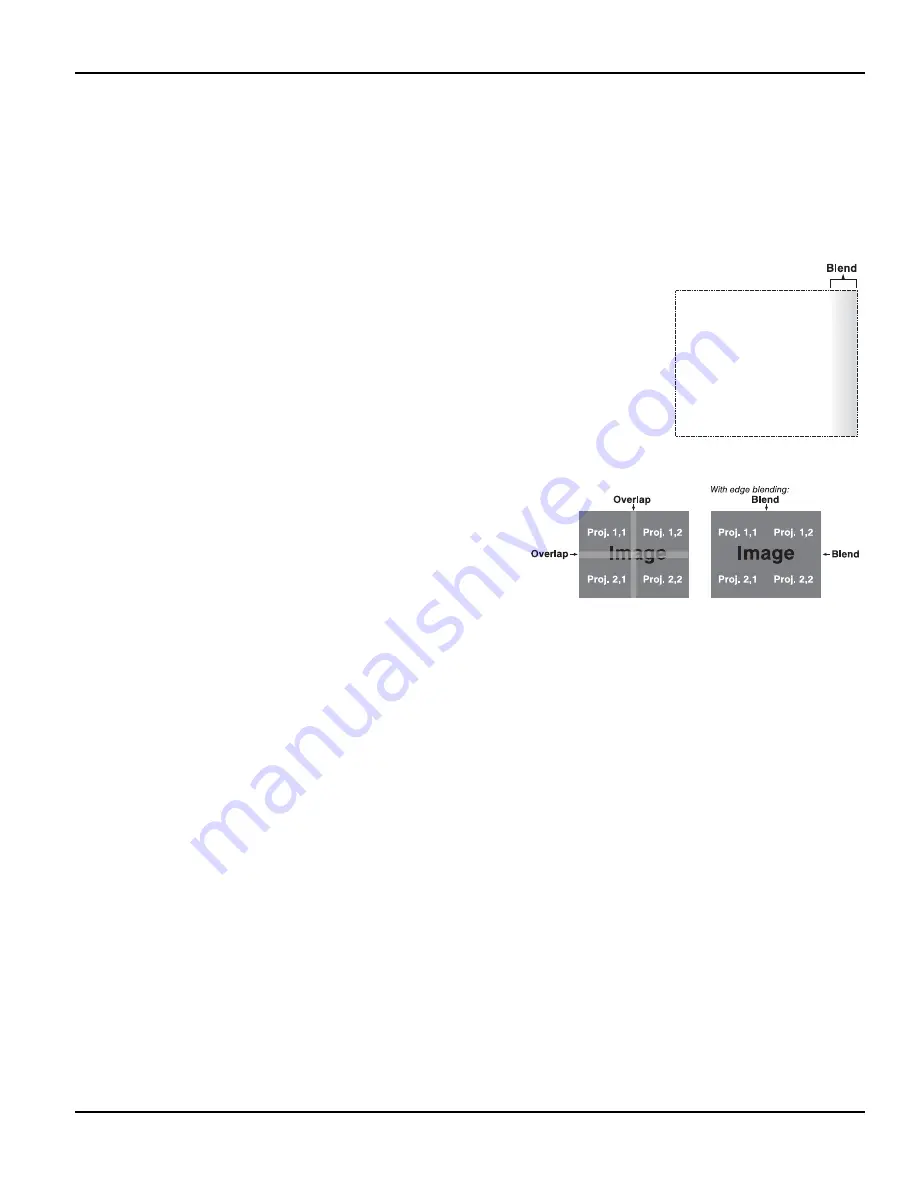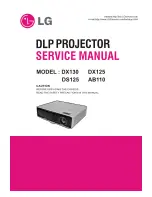
Section 3: Operation
3-60 Christie DS+60/DW30/Matrix 3000 User’s Manual
Canceling Brightness Uniformity
If you do not want to use or apply Brightness Uniformity settings, delete the
checkmark from the “Uniformity Enable” checkbox at the top of the Brightness
Uniformity menu.
Christie Edge Blending is an innovative set of software functions that can quickly and
easily blend the edges of multiple adjacent full screen images to create a single
seamless larger image.
What is a Blend?
In simple terms, a blend appears as a gradient strip
along an edge of a projected image. It is darkest along
the extreme edge of the image, and lightens nearer to
the rest of the image (see right). This area runs along
the edge of the projector’s internal DMDs (display
area); it cannot be located on interior pixels.
How Are Blends Used?
In multiple-projector walls,
complementary blends between
neighboring images can
compensate for the extra
“brightness” or intensity where
these edges overlap. By
controlling blend width and other
properties, you can achieve
uniformity across the group of
images. Visible overlaps will
disappear as illustrated in Figure 3.31.
For best results, use the same projector model and type throughout your display wall.
In addition, avoid high-gain screens whenever possible—the optical performance of
such screens demands minimal image offset, thus projectors must be located very
close to one another. Note too that the requisite tiling of the image—with data
repeated along internal edges that will overlap—must be correctly done by your
source.
Standard edge blending software controls are located in the 2-page Edge Blending
submenu access via Configuration menu, then Geometry and Color submenu, then
Edge Blending. The More option opens the second page of the Edge Blending
submenu.
Main Functions
Use standard edge blending controls to set the precise width, shape and midpoint you
need to blend overlapping edges together smoothly.
Blend Width
determines how much area is used for blending along an
overlapping edge. Slidebar values represent the number of 8-pixel steps used
for the blend. For example, a setting of “3” creates a blended edge 24 pixels
wide. A setting of “0” signifies no blending. For best results in most
applications, use a blend width of 16-48 steps (128-384 pixels).
Edge Blending
'
Figure 3.30
Figure 3.31. Edge Blending Concept
(NOTE: TILING DONE AT SOURCE)
Содержание DS+60
Страница 2: ......
Страница 104: ......
Страница 110: ......
Страница 118: ......
Страница 120: ......
Страница 122: ...Appendix C Serial Communication Cables C 2 Christie DS 60 DW30 Matrix 3000 User s Manual...
Страница 124: ......
Страница 130: ......
Страница 131: ...Appendix G 300W P VIP Product Safety Data Sheet Christie DS 60 DW30 Matrix 3000 User s Manual G 1...
Страница 132: ...Appendix G 300W P VIP Product Safety Data Sheets G 2 Christie DS 60 DW30 Matrix 3000 User s Manual...
Страница 133: ...Appendix G 300W P VIP Product Safety Data Sheets Christie DS 60 DW30 Matrix 3000 User s Manual G 3...
Страница 134: ......
















































